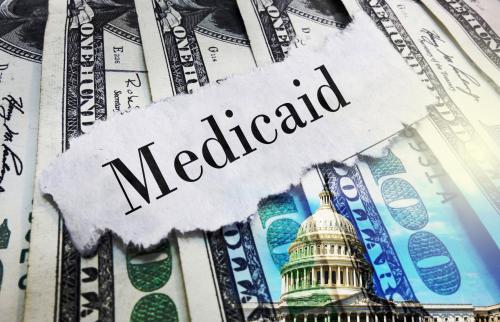A fair assessment of the budget deal signed by President Obama last week would allow for only at most two cheers. Its biggest achievement is raising the debt limit by enough to last until 2017, thereby at least temporarily eliminating the threat to the nation’s credit worthiness. The deal also provides funding levels above the Spartan caps established by the 2011 Budget Control Act so that both domestic discretionary spending and military spending can avoid reductions against a baseline that was already low by historical standards. In addition, the deal avoids a cut in benefits in the Social Security Disability Insurance (SSDI) program that was about to have its trust account run dry, as well as a big increase in payments by a significant minority of Medicare beneficiaries.
That’s a lot of good policy, achieved despite the partisanship that has been so characteristic of budget negotiations in recent years. So what’s not to like? Two shortcomings of the deal are especially notable. The first is that the solution to the pending SSDI shortfall is disappointing. It would be hard to support the imposition of reduced benefits on recipients of a government insurance program for the disabled, but Congress has known for some years that SSDI was running out of money. Congress should have been working on solutions that involved less spending or more revenue, or perhaps both. Instead, the reforms that Congress passed provided a very minor adjustment in the way both initial and continuing eligibility are determined and ignored more basic reforms. A non-partisan group assembled by former House members Jim McCrery and Earl Pomeroy under the auspices of the Committee for a Responsible Federal Budget (CRFB) produced a host of proposals that would address the underlying problems of the SSDI program such as how to emphasize work to control the rising caseload, but they were virtually ignored. Taking the easy way out, Congress transferred nearly $120 billion in funds from the Social Security Trust Fund into the SSDI Trust Fund. Unfortunately, this action will preserve the SSDI Trust Fund only until 2021 or 2022, at which time it will likely be back in the perilous situation it was in until this temporary fix was put in place.
The second problem is that the lubricant Congress used to enact the deal was money it doesn’t have. Thus, according to CRFB, all the spending in the deal cost $154 billion but the offsets in the bill amounted to only $78 billion. Thus, the true net cost of the bill, excluding budget gimmicks, was $76 billion. As always, the money will be obtained by additional borrowing, thereby increasing the nation’s debt.
Increasing the nation’s debt is the most important shortcoming of the bill. Due to improvements in the economy coupled with spending cuts and revenue increases achieved by previous budget deals reached since publication of the Simpson-Bowles Commission report in 2010, the fiscal outlook for the nation has improved. But the long-term debt problem has not been solved. The Center on Budget and Policy Priorities, based on figures from the Congressional Budget Office (CBO), projects that the ratio of the national debt to GDP will fall slightly from its current 74 percent to 73 percent by 2017. However, the ratio will then rise to 92 percent by 2040. This projection contrasts with the Center’s 2010 projection in which the debt-to-GDP ratio increased by more than 200 percent.
Granted, this is good news. But not so fast. The assumptions built into the projections are likely to be too optimistic. The CRFB projects that under a more reasonable set of assumptions, the debt will rise to over 150 percent of GDP by 2040. As CRFB argues, the debt path under these more reasonable assumptions is, though improved, nonetheless “unsustainable.”
Equally important, the big picture on the nation’s budget shows that future spending increases in Social Security, Medicare and other health programs, and net interest will eat up all future increases in revenue. CBO projects that compared to average spending in these three budget categories between 1965 and 2014, spending as a percentage of GDP by 2040 on Social Security will increase by 55 percent, on federal health programs by 220 percent, and on interest on the debt by well over 100 percent. As a result, spending on everything else will decline by around 40 percent. No wonder a recent report from the Urban Institute shows that the share of federal spending on children has already begun to decline and will fall by nearly 30 percent between 2010 and 2024.
Despite the modest achievements of the latest budget deal, long-term budget prospects continue to look bleak and present spending priorities still emphasize programs for the elderly and interest on the debt while squeezing other programs, including those for children. Perhaps two cheers for the deal is one too many.
Editor’s Note: this post first appeared in Real Clear Markets.
The Brookings Institution is committed to quality, independence, and impact.
We are supported by a diverse array of funders. In line with our values and policies, each Brookings publication represents the sole views of its author(s).



Commentary
Op-edTwo cheers for the recent budget deal
November 10, 2015